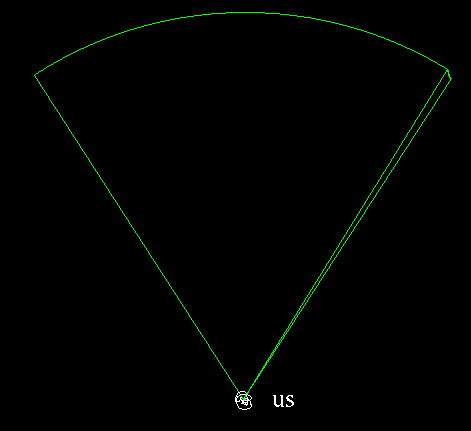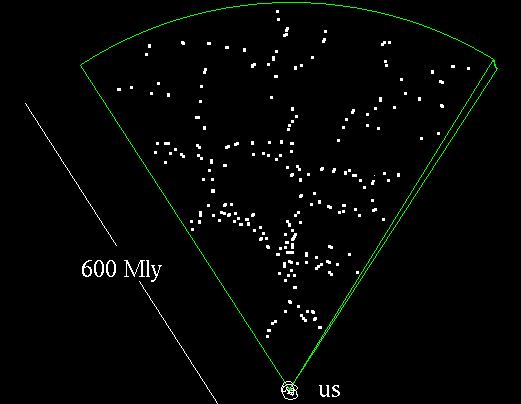How are galaxies distributed in space ?
Galaxies are not distributed evenly through space.
As we have seen, a big galaxy may have satellite galaxies. On a larger
scale, galaxies come in clusters. For example there is a small ``Local
Cluster'' containing our Galaxy and the Andromeda galaxy plus several
others (mostly small). An example of a big cluster of galaxies is
the Virgo Cluster.
One can look on a larger scale. Margaret Geller of Harvard has done
the following.
- Choose a thin slice of sky.

- The idea is to examine everything in that slice out to a certain
distance.
- Viewed from above, the region examined then looks like a slice
from a very thin pie.

- Measure the angles to all the galaxies in that slice.
- ``Measure'' the distances to the galaxies by measuring the
redshifts and assuming the Hubble relation.
- Plot the points.
Here is my impression of the results. The real data is in Fig26-23 of your
book. Unfortunately, I couldn't find an electronic version.

The thing one notices is not so much the clusters of galaxies as the
voids. The distribution of galaxies appears to be something like the
distribution of soap molecules in a pile of soap bubbles.
An important task of astronomy in the coming decades is to try to
explain this.
It would help if we knew how much dark matter there is and what it
is made of.
Davison E. Soper, Institute of Theoretical Science,
University of Oregon, Eugene OR 97403 USA
soper@bovine.uoregon.edu




